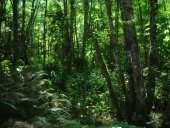Trace Oswald wrote:I do this too. Most of the nitrogen fixers in my food forest are natives that were growing other places on my land.
That's really neat Trace! I want to try to save seed from these types of plants and plant the seeds too. I've got some Mimosa seeds I need to spread out, now that I think about it.

My fruit and nut trees are purchased, grown from cuttings, or grown from seed but most of my support species are transplants or thing like comfrey that I can split and make into many more plants while leaving a large piece of the original. I move hostas that way as well.
I love plants like that. I want to try to get some wild daylilies established in some wet areas on my property.
I also do what I can to avoid disturbing the natives that are already in the food forest area. I have an area that has dozens of milkweeds that I avoid walking into at all. I have several areas in the food forest that I made paths around so they can grow up as they please. Other than the spots that I have to disturb to put in plants and areas that I mow for paths, I leave things alone as much as possible and try to add trees and bushes without removing anything more than necessary.
That's awesome! I'm trying to create a lot of these natural areas also. I find that the more wild plants I identify, the more I appreciate them, their natural beauty, and seek to identify their positive characteristics.









